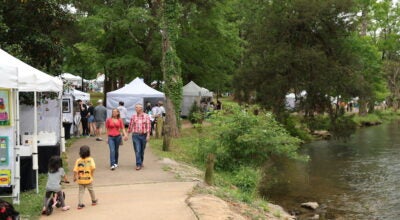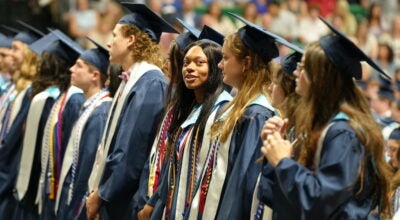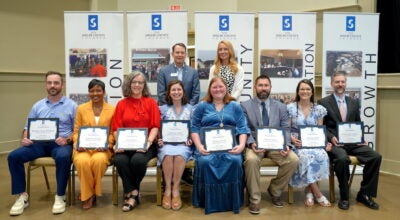Thinking outside the kiln: Firing prompts ‘think tank’
Published 4:59 pm Monday, November 18, 2013
By STEPHANIE BRUMFIELD / Staff Writer
MONTEVALLO – Sometimes, the best learning experiences occur outside classroom walls. Such is the case with the University of Montevallo’s anagama kiln, which was lit Nov. 5 and has brought art students from the walls Bloch Hall to a bustling area of woods on the northern edge of campus.
The 23-foot Japanese-style wood-fired chamber has been lit once – and sometimes twice – every year since 2002 and is used to fire ceramics made by students, professors and visiting artists. Firing the kiln is a nearly two-week-long process that requires groups of professors and students to work around the clock in four-and-a-half hour shifts, often adding wood to the kiln every five minutes to help it reach its temperature target, or 2400 degrees Fahrenheit.
“The unique aspect is the surface it creates on the pieces,” said UM art professor Scott Meyer, referring to the ash that settles on pieces in unpredictable ways during the firing process.
Because of the scarcity of wood-fired kilns – very few are found in the United States – its firing has drawn the attention of artists throughout the country. This year is no exception, with visitors hailing from the Rochester Institute of Technology’s School for American Crafts, McNeese State University and the Kiln Studio and Gallery in Fairhope.
While giving visiting artists access to a kiln they wouldn’t otherwise have access to, the kiln has also served as a teaching tool for students.
“We’re approaching this firing and some of the things that we’re going to try to do in an experimental kind of way, and we’re approaching it as beginners,” said Jane Shellenbarger, an associate professor at RIT. “It’s a think tank. We’re talking about what might work and how we can tweak things to get things to work, and the students are listening to that and participating and problem solving.
“That’s a really important educational tool in terms of how to think, how to problem solve, how to work through some sort of technical issue and how to fabricate results.”
Meyer has held his classes at the kiln since its firing, and he echoed the sentiment.
“I want to talk to them about different things, but there’s a lot that’s just observation,” Meyers said. “Everybody thinks artists work in these isolated little cubicles, and sometimes that’s true, but in our field, this collaborative field, you need all these people. The confluence of people saying, ‘What if we tried this? What if we tried that?’ That’s a rich environment creatively.”
And the environment hasn’t just affected the students.
“Our goal was to discover what could be gained by a melding of (low-temperature) Raku firing approaches and (high-temperature) anagama wood-firing,” Meyers said. The experiments involved pulling test pieces out at high temperatures and quenching them in chemical baths, which worked and produced “affects neither (he nor visiting professor Rick Hirsch) ever saw before.”
“Though we are still looking, it appears that no one ever sought to do this at anagama temperatures until we did it last Friday,” he said. “If that holds up, we just created a completely new firing approach here at UM.”









